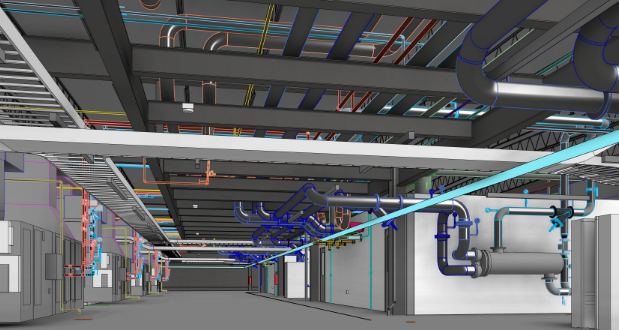Building information modeling (BIM) has transformed construction management by revolutionizing how we design, construct, and oversee buildings.
Leveraging three-dimensional models enabled by digitization technology, BIM allows architects, engineers, and construction professionals to visualize a structure from its inception through to completion with unprecedented detail.
The capabilities of BIM allow for more informed decisions, optimized performance, reduced waste, and, ultimately, a significant increase in efficiency and productivity. In the following sections, we’ll delve deeper into the myriad benefits of BIM and its transformative potential.
If you want to know more, consider checking out XYZ Reality’s article, “What are the benefits of BIM?”.
What is BIM exactly?
BIM is a process that integrates all the physical and functional aspects of a structure into comprehensive digital representations. Imagine it as an intricate three-dimensional model that not only represents the building visually but also provides vital data regarding specifications, materials, and processes involved with its construction.
BIM can be leveraged by architects, engineers, and construction professionals to effectively plan each stage of a building’s life cycle. For instance, in the design stage, it can help assess potential impacts before actual construction commences so professionals can make changes, saving both money and time later in the project.
During construction, BIM can guide the precise placement of materials, reducing waste and improving efficiency. Even after the building is complete, BIM can be instrumental in facility management, for example, by helping monitor energy consumption and facilitate regular maintenance.
Consequently, the adoption of BIM in the construction management industry has the potential to dramatically enhance both the process and the final product, leading to improved sustainability, increased productivity, and superior structures that are built to last.
The uses of BIM in practical applications
BIM can be leveraged effectively across a range of scenarios, from initial design through to post-construction management. Here are some key scenarios where BIM may prove invaluable:
- Design phase: BIM provides architects with an immersive three-dimensional model of their proposed structure during this initial design stage. This helps to analyze the potential ramifications of any decisions made.
- Construction phase: It provides invaluable aid for managing logistics and overseeing material placement, thus cutting waste and increasing overall efficiency.
- Facility management: BIM can be indispensable when used for post-completion building management, helping monitor various systems within a structure, such as energy consumption.
- Renovation or demolition: It can provide invaluable insights when renovating or demolishing a building, providing the safest and most efficient methods of accomplishing these tasks.
The benefits of using BIM over other applications
BIM stands out as an efficient construction management strategy that surpasses conventional drafting methods in terms of time and money savings. BIM goes beyond mere geometry; it contains essential data related to the physical and functional components of buildings for more informed decision-making.
BIM can bring numerous advantages to a project. Here are just a few.
Efficiency and accuracy
Traditional methods involve redundant drafting and an absence of real-time collaboration, leading to miscommunication, errors, and rework.
BIM ensures all parties involved can easily access an up-to-date model, creating consistency and minimizing errors. When modifications are made, any updates are instantly reflected across all views.
Risk mitigation
Construction can be a risky endeavor when using outdated building plans or inaccurate data. However, BIM provides crucial insights that increase safety and cost-efficiency.
BIM delivers comprehensive, accurate, and actionable insights that cannot be achieved with traditional methods or other applications, making it an indispensable asset in modern construction.
Conclusion
BIM goes beyond traditional methods in that it integrates key building data with highly detailed three-dimensional models for more informed decision-making throughout a building’s lifespan. Not only can it increase efficiency and accuracy, but it can also contribute to resource optimization, sustainability, and risk mitigation.
BIM stands out as an integral asset in modern construction, from designing buildings and managing construction logistics to monitoring post-construction performance.
 HammBurg Be informed with latest news, reviews, entertainment, lifestyle tips, and much more.
HammBurg Be informed with latest news, reviews, entertainment, lifestyle tips, and much more.




